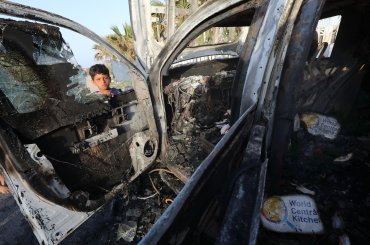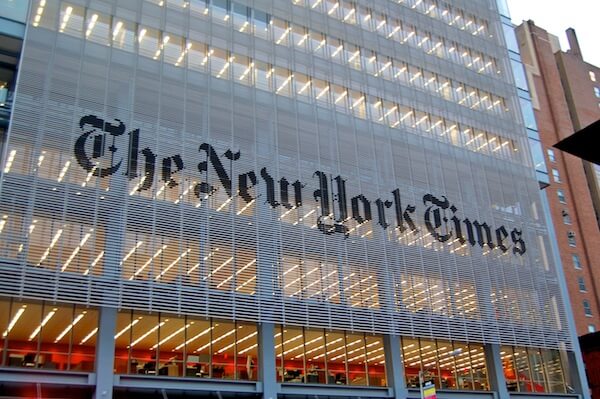It didn’t take long for Israel’s new far-right, Jewish-supremacist government to confirm the fears that it happily risks triggering a Third Intifada. Yesterday, the new national security minister Itamar Ben-Gvir fulfilled his promise to march provocatively up to the area in Jerusalem’s Old City that most Jewish Israelis call “the Temple Mount.” His move predictably triggered outrage among Palestinians, Muslims and Arab leaders, which call the site the Haram al-Sharif, and even concern from the United States and Israel’s normal allies.
Palestinian resistance organizations, including Hamas, warned that Ben-Gvir’s visit could lead to “an explosion.” Haaretz, the respected Israeli daily, quoted a chilling response from Zvika Fogel, a pro-government member of the Knesset in Ben-Gvir’s far-right party:
If Hamas violates the current existing peace and opens fire on Israeli territory we will respond as I think we should, and yes it would be worth it because this will be the last war and after that we can sit and raise doves and all the other beautiful birds that exist.”
You are unlikely to read such statements in the U.S. mainstream media.
Unclear U.S. reporting over the years has probably confused your average American. Let’s start with one of the area’s names: Temple Mount, a location that many Jews contend was the site of 2 ancient Jewish temples. (The second was destroyed by the Romans, in 70 AD.) The archeological evidence is apparently inconclusive, in part because no excavations have been done on the site. No matter: people can certainly hold a site sacred without historical proof.
What is clear is that sitting right there today is the Al-Aqsa Compound, which includes a mosque: Al-Aqsa, completed 1265 years ago, and the even older shrine called the Dome of the Rock, which dates to the year 691. Muslims also regard the area as one of their holiest sites. What may not be understood by outsiders is that some Jewish extremists say they want to destroy or remove those two ancient buildings, and replace them with the Third Jewish Temple. “Time of Favor,” an Israeli feature film that came out in 2000, depicted the threat. In the film, Rabbi Meltzer runs a yeshiva, or religious school, in occupied West Bank Palestine. He is clearly modeled after Meir Kahane, the extremist religious leader who is one of security minister Ben-Gvir’s inspirations and heroes.
The movie turns on the conflict between 2 of Meltzer’s students: Manacham, the commander of the yeshiva’s own Israeli army unit; and Pini, a dislikeable nerd and even by the occupation’s standards, a fanatic. Pini, devoted to the Rabbi, plots with others to use suicide bombs to actually blow up the Dome of the Rock. In the end, Menacham turns on his friend, and with help from Israeli security officers and other Israeli commandos they thwart the dangerous plot at the last minute. (Palestinians appear almost nowhere in the film.)
In fairness, the number of Jewish Israelis who actually want to destroy the 2 buildings is surely very low. But just about every Palestinian must be aware that these kind of poisonous attitudes are actually alive. How would the French feel if even a small extremist group wanted to destroy Notre Dame Cathedral, and put another religion’s shrine in its place? (Notre Dame is 4 centuries younger than the buildings in the Al-Aqsa compound).
And even if you discount the physical danger to the buildings, Palestinians remain under occupation, which is about to get even worse. The death toll in the West Bank reached its highest level last year since 2005. Israel’s hardline former Defense Minister, Moshe Ya’alon, even warned: “Netanyahu, you received a mandate to form a coalition, not leave our security in the hands of arsonists who support Jewish terrorism.”
Let’s close with an eloquent explanation last year from Hanin Majadli, a Palestinian citizen of Israel: “What Jewish Israelis don’t get about Al-Aqsa.” She wrote:
[Al-Aqsa] is no longer just an ordinary mosque and the connection to it is no longer religious. It serves as a symbol of Palestinian national victory over Jewish ultranationalism. This victory is achieved thanks to the fact that the area of Al-Aqsa is the only place that Israel refrains from controlling, and that situation is enshrined in law. . . The determination of the east Jerusalemites, and their battle against the clubs and grenades of the police forces, have become a symbol of effective resistance as well as conveying a clear message: ‘We won’t allow you to control Al-Aqsa, because it is the last piece remaining under Palestinian control, and no Palestinian will give it up.’



I used to sing in a synagogue choir. The Yom Kippur afternoon service includes a description of the rites of the temple in ancient times – we can’t perform them, so we read about them. Animal sacrifices! Yikes!! Good riddance to bad rubbish!!! And there are people who want to destroy Al Aqsa, build a third temple, and carry out these rites? What are they thinking?
What they are not thinking is that an attack on Al Aqsa would start an intifada like nothing they’ve ever seen. Palestinians who had never done anything except try to survive would rise up.
The analogy to Notre Dame is a bunch of juvenile crap. If journalism is supposed to be the first draft of history then when actually delving into history you should quote historians, not your own ignorance.
It is remarkable (noteworthy) that the primary religious group that prays at the Western Wall (Kotel) is opposed to figuring out the exact spots on the Temple Mount where Jewish tradition places the location of the Temple in the time of Herod. Not being a journalist claiming to speak for history, I can’t testify to the location of the Temple. I can testify to the fact that those praying at the Kotel take it as history that the place where they cannot go to pray as one could in the days of old is on the other side of the Kotel.
If reason dictates that we should avoid worsened bloodshed, it therefore dictates that attempts to change the status quo on the Temple Mount defy reason.
Still, a discussion of the facts and the limitations that the building of mosques on a Jewish holy site is a discussion that deserves to take place outside of the spotlight. (The spotlight belongs on avoiding bloodshed.)
The community that is foremost in its study of the laws of the sacrifices (along with the study of all Talmudic law) happens to be a primarily quiescent community that does not participate in the Israeli army and also opposes any thoughts of going up onto the Temple Mount let alone rebuilding the Temple before a rabbinical court can determine that the age of Messiah has arrived and the steps that such an age would entail.
If it was not a war situation, then the situation would be entirely different and I would advocate confronting the followers of the Islamic tradition which accepts the books of Moses as sacred (but flawed) to admit that Jews should be allowed to build some edifice somewhere on the Temple Mount. (Again, obviously it is a war situation and that situation requires priority.)
But here are some questions.
Can you name one Islamic historian who denies that Solomon’s Temple was there? Can you name one Jewish rabbi of pedigree that denies that the temple was there? When you’re writing about the flaws of the New York Times you do not need to consult experts, but when you’re writing about the Temple Mount, you should consult experts and not spin things off the top of your head.